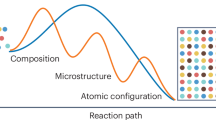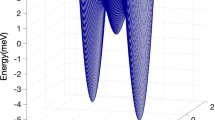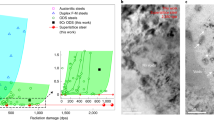Abstract
IN metallic solid solutions atoms of the different elements are usually distributed at random throughout the lattice. In certain cases, however, an ordered distribution, or superlattice occurs. The transformation from order to disorder has received considerable attention because the simplicity of the process renders it susceptible to theoretical interpretation. The entropy change is practically equal to the entropy of mixing, which can be calculated from first principles. The ordered state, which has the lower entropy, will be stable only when its internal energy is lower than that of the disordered configuration.
This is a preview of subscription content, access via your institution
Access options
Subscribe to this journal
Receive 51 print issues and online access
$199.00 per year
only $3.90 per issue
Buy this article
- Purchase on SpringerLink
- Instant access to full article PDF
Prices may be subject to local taxes which are calculated during checkout
Similar content being viewed by others
References
Hume-Rothery, W., and Powell, H. M., Z. Krist., 91, 23 (1935).
Jette, E. R., Trans. A.I.M.E., 111, 75 (1934).
Hansen, M., "Aufbau der Zweistofflegierungen" (Julius Springer, Berlin, 1936).
Johansson, C. H., and Linde, J. O., Ann. Phys., 25, 1 (1936).
Author information
Authors and Affiliations
Rights and permissions
About this article
Cite this article
HULTGREN, R., TARNOPOL, L. Factors influencing Stability of Superlattices. Nature 141, 473–474 (1938). https://doi.org/10.1038/141473a0
Published:
Issue date:
DOI: https://doi.org/10.1038/141473a0
This article is cited by
-
The Au−Cu (Gold-Copper) system
Journal of Phase Equilibria (1987)



